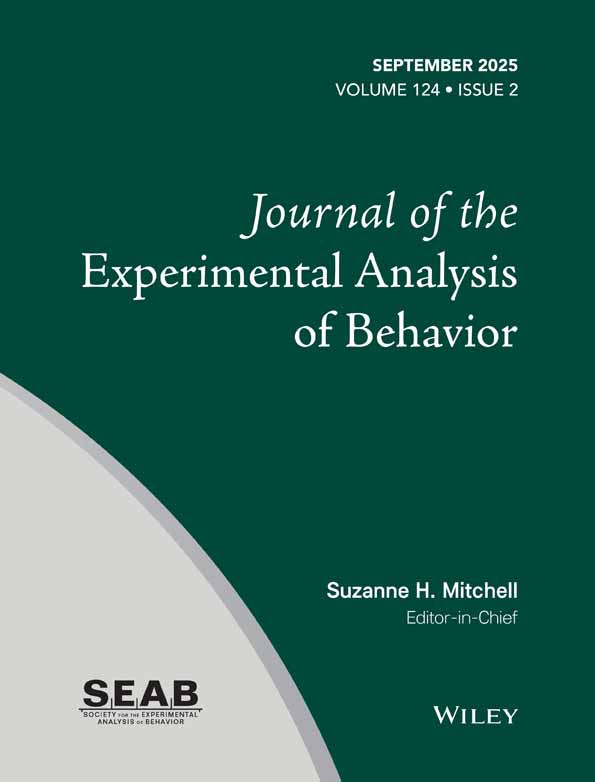FACILITATION AND SUPPRESSION OF HUMAN LOSS-AVOIDANCE BY SIGNALED, UNAVOIDABLE LOSS1
This research was supported by NSF grant GB 4004 and by NIMH grant MH-08430. Irene Rakauskas and Susan Slavick served as research assistants.
Abstract
A 15-sec stimulus followed by unavoidable monetary loss was presented to human subjects who were avoiding loss on a free-operant schedule. As has been observed in studies where shock is the aversive event, initial reactions to the pre-loss stimulus were transient increases in overall and stimulus rates. Unlike shock studies, continued training produced decreased rates, in the presence of the 15-sec stimulus, which were maintained in two of three subjects. Subsequent observations indicated that lowered rates were a function of the subject's rate of avoidance responding, the duration of the stimulus, and the scheduling of avoidable losses. Increasing the duration of the stimulus eliminated lowered rates in the presence of the stimulus and subsequent exposures to conditions which previously produced lowered rates did not result in recovery of the phenomenon. Introduction of the pre-loss stimulus on an extinction baseline (avoidable losses were omitted), however, reinstituted lowered rates. It is proposed that the pre-loss stimulus assumed discriminative control over low rates because responding in the presence of the stimulus was ineffective in avoiding the unavoidable loss. Recovery from lowered rates is attributed to the occurrence of avoidable losses during the stimulus period, and maintenance of lowered rates on the extinction schedule to the omission of such avoidable losses.




